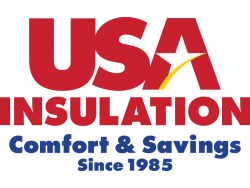EASTLAKE, Ohio – Dec. 13, 2011 – Even though the official start of winter isn’t until Dec. 22, the high heating bills and cold, drafty rooms have already begun for many homeowners.
One local energy conscious company is encouraging homeowners to not think so much about the start of winter as they should the end of the 2011 energy tax credit, which is Dec. 31. Various home energy efficient upgrades qualify, including new windows, doors and insulation.
“One of the lowest cost options for improving a home’s energy efficiency is making sure you have adequate insulation in the walls and attic. It can decrease winter heating bills by as much as 30 to 50 percent,” said USA Insulation President Pat Pitrone.
The energy tax credit is based on a percentage of the overall cost. For example, adding insulation to a home can give homeowners a tax credit of 10 percent of the cost up to $500. Homeowners don’t have to actually have to have these energy efficient upgrades installed by Dec. 31; they just have to have it paid for by the end of the year.
According to the U.S. Department of Energy, only 20 percent of the houses built before 1980 are considered well insulated. Many homes have no insulation at all, due to the fact that building codes didn’t require insulation prior to the mid-1970s.
Pitrone says there are several external signs a homeowner can look for indicating the home lacks adequate insulation. The most obvious signs are if the snow melts off the room (and not your neighbor’s), icicles form on the eaves, and if the snow on the ground melts around the perimeter of the home.
USA Insulation specializes in injecting foam insulation into the walls of existing homes, although they also install attic insulation and perform air sealing services.
According to Pitrone, before choosing a wall insulation homeowners should make sure it not only has the highest R-value possible, but also is environmentally friendly, long lasting, fire resistant, fills the entire wall cavity and won’t settle. He claims his company’s foam insulation is up to 45 percent higher R-value than fiberglass, cellulose or rockwool and contains no formaldehyde — a substance found in some wall insulation.
“The tax credit as well as the money saved in reduced energy costs often pays for the insulation within a few years. After that, the insulation continues to save money for the life of the home. It can also increase the resale value of a house,” said Pitrone.
PHOTO CAPTION: USA Premium Foam insulation, seen here being injected into the walls of an existing home from the outside, can qualify for up to a $500 tax credit.



